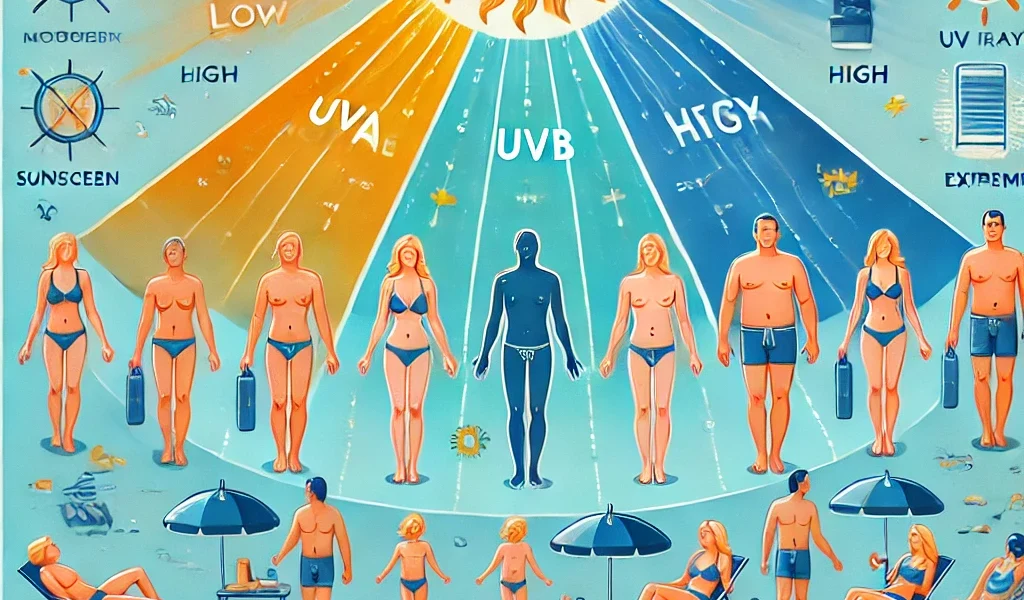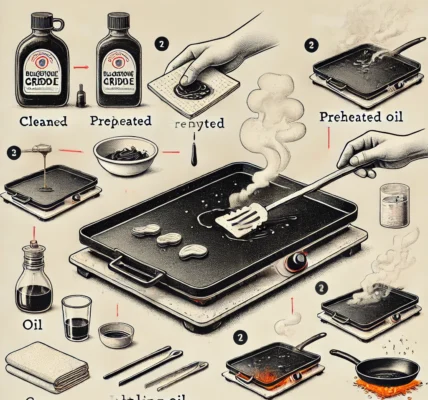UV Index and Tanning: The Complete Guide
Tanning is often considered a sign of health and vitality, but achieving that bronzed glow requires a good understanding of the sun’s ultraviolet (UV) radiation. Central to this is the UV Index, a tool designed to measure the strength of UV rays. In this guide, we will explore the relationship between the UV Index and tanning, the potential risks of overexposure to UV radiation, and how to tan safely while maintaining your skin’s health.
Table of Contents
- What is the UV Index?
- How the UV Index Affects Tanning
- UV Radiation Types and Their Role in Tanning
- Risks of Overexposure to UV Radiation
- Best Times to Tan According to the UV Index
- Safe Tanning Practices
- Alternatives to Sun Tanning
- Conclusion
What is the UV Index?
The UV Index is a numerical scale that indicates the strength of the sun’s ultraviolet radiation at a specific time and location. It was created to help individuals gauge the risk of UV exposure and to plan outdoor activities with sun protection in mind. The scale ranges from 0 to 11+, with higher values indicating greater UV radiation intensity and higher risks of skin damage.
Here’s a breakdown of the UV Index:
- 0-2 (Low): Minimal risk of harm from unprotected sun exposure. Suitable for most outdoor activities with basic sun protection like sunglasses.
- 3-5 (Moderate): Increased risk; it’s advised to wear sunscreen, hats, and seek shade during midday hours.
- 6-7 (High): High risk of harm from unprotected exposure. Use sunscreen, cover skin, and limit direct sun exposure during peak hours.
- 8-10 (Very High): Very high risk; protection is necessary. Avoid prolonged sun exposure, and use strong sunblock and protective clothing.
- 11+ (Extreme): Extreme risk of harm. Unprotected skin can burn within minutes. It’s essential to avoid direct sun exposure and stay indoors if possible.
Understanding the UV Index helps in determining the safest times to be in the sun and the level of protection needed.
How the UV Index Affects Tanning
The UV Index directly impacts how quickly and effectively you can tan, as well as the risks associated with sun exposure. The higher the UV Index, the more intense the UV radiation, which accelerates the tanning process but also significantly increases the risk of sunburn and long-term skin damage.
- Low UV Index (0-2): Tanning will take longer, but the risk of burning is minimal. You can enjoy prolonged sun exposure with basic protection.
- Moderate UV Index (3-5): Tanning is achievable with moderate exposure, but the skin may start to burn if unprotected for extended periods.
- High UV Index (6-7): Tanning occurs rapidly, but so does the risk of sunburn. High levels of protection, such as sunscreen with SPF 30+ and protective clothing, are necessary.
- Very High/Extreme UV Index (8-11+): Tanning happens very quickly, but the risk of severe sunburn and long-term skin damage is significant. It’s best to limit sun exposure during these conditions.
Balancing sun exposure and skin protection is key when aiming for a tan, especially when the UV Index is high.
UV Radiation Types and Their Role in Tanning
There are three types of UV radiation that affect the skin: UVA, UVB, and UVC. Only UVA and UVB rays penetrate the Earth’s atmosphere, influencing the tanning process.
- UVA (320-400 nm): UVA rays are longer in wavelength and penetrate the deeper layers of the skin. These rays are responsible for immediate tanning (or darkening) of the skin and contribute to skin aging and wrinkles. UVA rays are present all day and can penetrate through windows and clouds.
- UVB (290-320 nm): UVB rays are shorter in wavelength and primarily affect the outer layer of the skin (epidermis). They are responsible for delayed tanning, sunburn, and most skin cancers. UVB rays are strongest between 10 a.m. and 4 p.m. and vary with the season and location.
- UVC (100-290 nm): Fortunately, UVC rays are absorbed by the Earth’s ozone layer and do not reach the ground, so they are not a factor in tanning or skin damage.
Both UVA and UVB rays contribute to the tanning process, but excessive exposure can lead to skin damage and increase the risk of skin cancer.
Risks of Overexposure to UV Radiation
While tanning is desired by many, overexposure to UV radiation comes with several risks, some of which can be long-lasting:
- Sunburn: Prolonged exposure to UVB radiation can cause the skin to burn, resulting in redness, pain, and peeling. Severe sunburns can lead to blistering and increase the risk of skin cancer.
- Premature Aging: UVA rays penetrate deep into the skin, breaking down collagen and elastin fibers, which causes premature aging, wrinkles, and sagging.
- Skin Cancer: Excessive exposure to both UVA and UVB rays significantly increases the risk of developing skin cancers such as melanoma, basal cell carcinoma, and squamous cell carcinoma.
- Eye Damage: UV radiation can also harm the eyes, leading to cataracts, photokeratitis (sunburn of the eye), and long-term damage to the retina.
By understanding these risks, individuals can take steps to protect themselves while still enjoying the sun responsibly.
Best Times to Tan According to the UV Index
Tanning is safest when the UV Index is moderate to low, typically during the early morning or late afternoon when UV radiation is less intense. The ideal times for sun exposure are:
- Before 10 a.m. and after 4 p.m.: These times generally have a lower UV Index, reducing the risk of sunburn while still allowing for a gradual tan.
- In cooler seasons: The UV Index is lower in the fall and winter months in most regions, making it safer to tan with reduced risk.
Even during lower UV Index hours, it’s essential to use sunscreen to protect your skin from harmful rays.
Safe Tanning Practices
Achieving a tan safely requires balancing sun exposure with protective measures. Here are some tips to help you tan without risking your skin’s health:
- Use Broad-Spectrum Sunscreen: Always use sunscreen that protects against both UVA and UVB rays, with an SPF of at least 30. Reapply every two hours and after swimming or sweating.
- Limit Exposure During Peak Hours: Avoid direct sun exposure between 10 a.m. and 4 p.m. when the UV Index is highest.
- Wear Protective Clothing: Cover up with hats, sunglasses, and light clothing to shield your skin from excessive UV exposure.
- Gradual Exposure: Build your tan gradually by limiting sun exposure to short periods over several days, giving your skin time to adjust.
- Hydrate and Moisturize: Drink plenty of water to keep your skin hydrated, and use after-sun moisturizers to soothe and replenish your skin after tanning.
Alternatives to Sun Tanning
For those who wish to avoid UV radiation but still want a tan, there are several alternatives:
- Self-Tanning Lotions and Sprays: These products contain dihydroxyacetone (DHA), which reacts with the skin’s surface to create a tan-like appearance without UV exposure.
- Spray Tanning Booths: A professional spray tan can give you an even, full-body tan in minutes, with no risk of UV damage.
- Gradual Tanning Moisturizers: These lotions build up a natural-looking tan over several days, offering a subtle glow without UV rays.
These alternatives provide a safe way to achieve a bronzed look while completely avoiding the harmful effects of UV radiation.
Conclusion
The UV Index is a vital tool in understanding how the sun’s ultraviolet rays impact your skin, both in terms of tanning and the risks of overexposure. By monitoring the UV Index, choosing the right times for sun exposure, and practicing safe tanning habits, you can enjoy the sun responsibly while protecting your skin from long-term damage.
Remember that while a tan may look attractive, your skin’s health should always come first.


